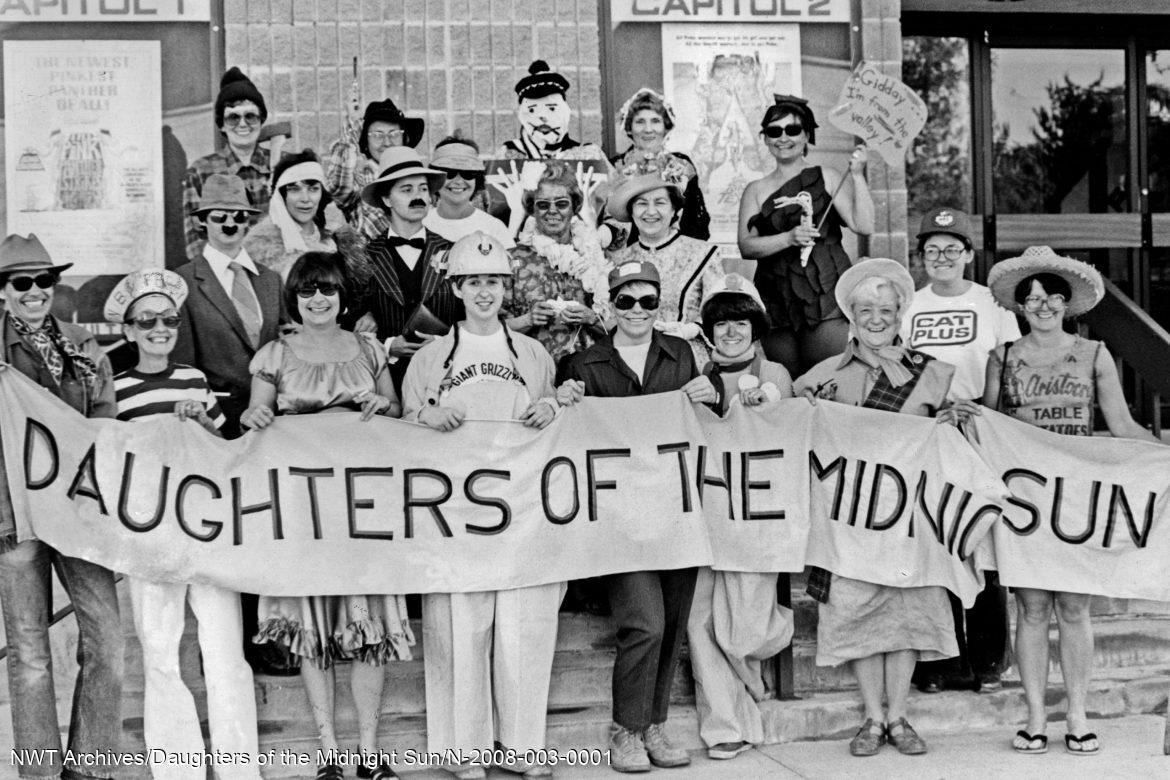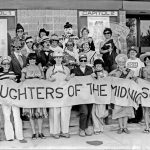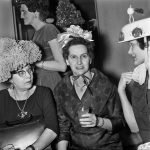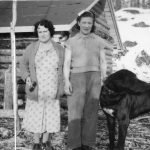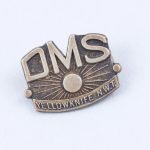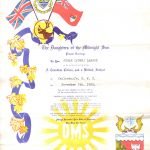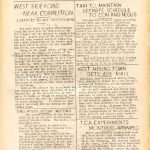1938
Women in a Mining Town
The discovery of gold at Yellowknife Bay in 1934 sparked a mineral rush and subsequent settling of a new community of newcomers and Indigenous families on the north shore of Great Slave Lake. They called it ‘Yellowknife’ after the nearby river and the Indigenous people living in the area. What began as a series of loosely connected prospector’s bush camps had by 1937 congealed into a place of commerce and government services. In 1938, Yellowknife’s waterfront was bustling with activity, and over 1,000 people lived in the district.
Yellowknife’s settler population was predominantly male in these early years. Yellowknife had a population of single miners, transient construction crews, and a few families. Vicky Lepine’s arrival in Yellowknife is notable as being the first white female to arrive in the community in 1937. She cooked at the Wildcat Café, operated a commercial laundry, and prospected for gold. Lepine’s vibrant and cheerful personality made her a southern media sensation. Some even regarded her as an emissary for the camp and its honorary “mayor” long before a town government existed.
More women began to arrive and in November of 1938, created Yellowknife’s Daughters of the Midnight Sun (DMS). They adopted the motto, “to contribute to the betterment of the community and to enjoy friendship with each other having no regard to racial, religious, or political prejudices.”
Single industry mining towns were a challenging place to raise a family. Gold deposits were located, dismissed, exploited, and extracted in a constant movement of people, technology and information. The mining wives and other members of DMS played an essential role in transforming the mining town of Yellowknife into the community it is today.
On the 10th anniversary of DMS, Yellowknife’s News of the North wrote that “the women were busy … they bought books for the newly organized school, sponsored dances and socials, purchased medicine, food and clothing for needy cases, planned their first mid-night banquet on the longest day of the year, gave surprise parties, held Halloween masquerades, donated to the Red Cross, sent gifts to the local boys in uniform during the war, started the town’s first lending library …[and] … contributed to the school-building fund.” And that was just their first ten years!
Social events and the sale of their famous cookbooks raised funds for many DMS projects over the years. While one of its stated goals was to make Yellowknife a better place, it also helped Yellowknife women, primarily non-Indigenous, to connect to an isolated northern mining town by providing a means to meet and socialize.
The highlight of each year was “the annual banquet and party held at midnight of June 21 when the Daughters of the Midnight Sun leave their husbands at home and have fun on their own!”
As Yellowknife grew and developed, there became less need for an organization like DMS. Membership in DMS, which had once peaked at 90, had dwindled to 25. The final meeting of the Daughters of the Midnight Sun was held in 1985. In their last act to help make Yellowknife a better place to live, the club donated $5000 to the Yellowknife Association of Concerned Citizens for Seniors to help construct Aven Manor care home.
